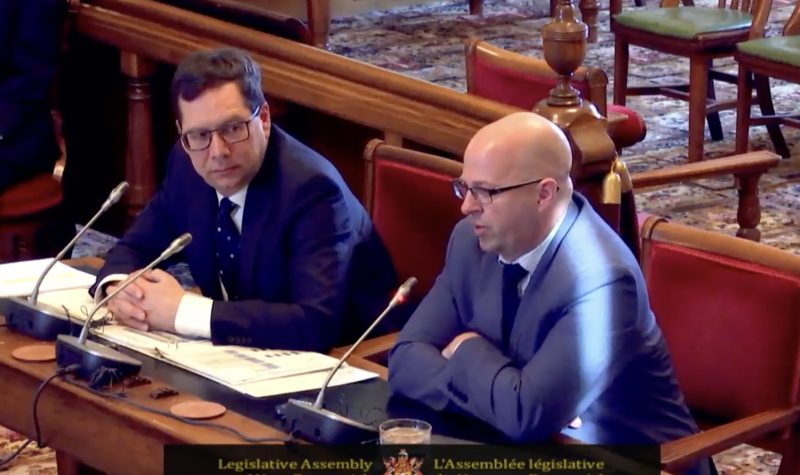Mount Allison officials told MLAs this week that university revenues aren’t keeping up with expenses, even as tuition continues to rise.
“This is true for most universities, and so the simple math is that tuition goes up every year, ” said Robert Inglis, VP of finance and administration, during a meeting of the Select Committee on Public Universities.
The all-party legislative committee routinely holds hearings where public universities report on their operational highlights and field questions from MLAs. Hearings began on Tuesday morning with a presentation by Inglis, flanked by Jeff Hennessy, Mount A’s university provost and VP academic and research.
Altogether, Mount Allison has a $54.5 million budget for its current academic year. But with $55.7 million in expenses, it will run a deficit of more than a million dollars. Fifty per cent of the university’s revenue comes from tuition and student fees, and this year’s budget includes a three per cent tuition hike. That brings tuition fees to nearly $10,000 for full-time domestic students, and closer to $20,000 for international students.
Another 43 per cent of Mount A’s revenue comes from provincial grants. Compared to tuition, those funds have increased slowly over the years.
Minister of Post-Secondary Education Trevor Holder announced last year that universities in New Brunswick would receive a 1.5 per cent increase in operating grants, with an additional one per cent incentive linked to growth in enrolment.
Altogether, it means that Mount Allison’s revenues increase by about 2.5 per cent annually, according to Inglis.
“As you know from your own conversations about your own budgets in the government, inflation is not a two-and-a-half per cent world,” he said.
He added that universities, particularly in rural areas, are increasingly expected to provide certain professional services, putting additional pressure on limited budgets.
Those services, outlined by Hennessy, include staff who focus on equity, diversity and inclusion and sexual violence prevention and response.
Overall, government contributions to post-secondary education have dropped massively in recent decades.
New Brunswick covered 80 percent of the cost of universities in the 1980s, compared to just 57 percent by 2022, according to the Federation of New Brunswick Faculty Associations.
“It’s about proper financing at the adequate level that will allow the university to function at the capacity that it’s supposed to,” he said.
Sauvageau, a criminology prof at Saint Thomas University, called on the government to reduce tuition fees, noting that many students work long hours in jobs that may interfere with their studies.
He also noted that students who graduate with a bachelor’s degree in New Brunswick end their studies with an average of $40,000 in debt, a reference to 2015 data from Statistics Canada.
That’s a larger debt load than anywhere in the country, except for Nova Scotia, where it was $41,000, compared to a national average of $28,000.
It’s not all bad news. A 2018 study from the Maritime Provinces Higher Education Commission indicated the debt situation among students in the region improved over a seven-year period.
The study found that 57 per cent of students from the class of 2014 borrowed money to finance their studies, with a median $30,000 in debt among those who borrowed.
Compared to the class of 2007, “the rate of borrowing decreased 13 percentage points and correcting for inflation, borrowers accumulated $3,669 less debt,” according to the study.
Meanwhile, the number of people with no debt from their first degree two years after graduation increased, the study found.
On Tuesday, Inglis told MLAs that, while tuition has increased, the university has enlarged the amount of financial aid available per student.
“In that way, we can target that financial aid to those students who absolutely need it. Every student has different economic circumstances,” he said.
Sauvageau noted that many countries in the world, such as Poland and Germany, offer university with free tuition.
But he acknowledged the idea remains outside of the mainstream in the North American context.
"It's not discussed," he said, speaking in French.
In response to a query from CHMA, the Department of Post-Secondary Education provided an emailed statement.
It cited investments of roughly $237 million overall for New Brunswick’s universities and said the government is "aware of the various challenges they are facing."
Discussions with universities are ongoing to ensure that "government’s funding contributions are appropriate," it added.
Listen to the CHMA story below:


